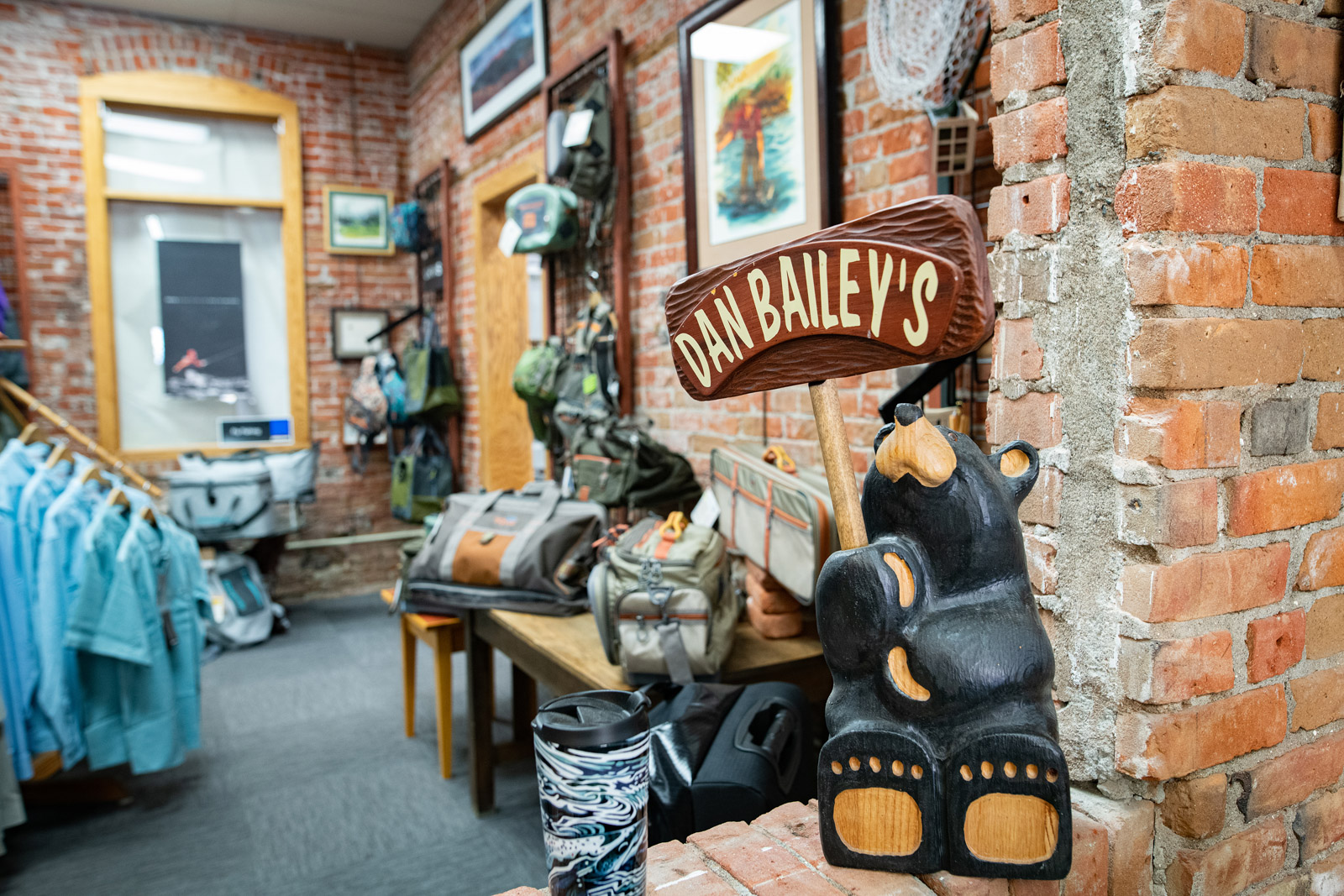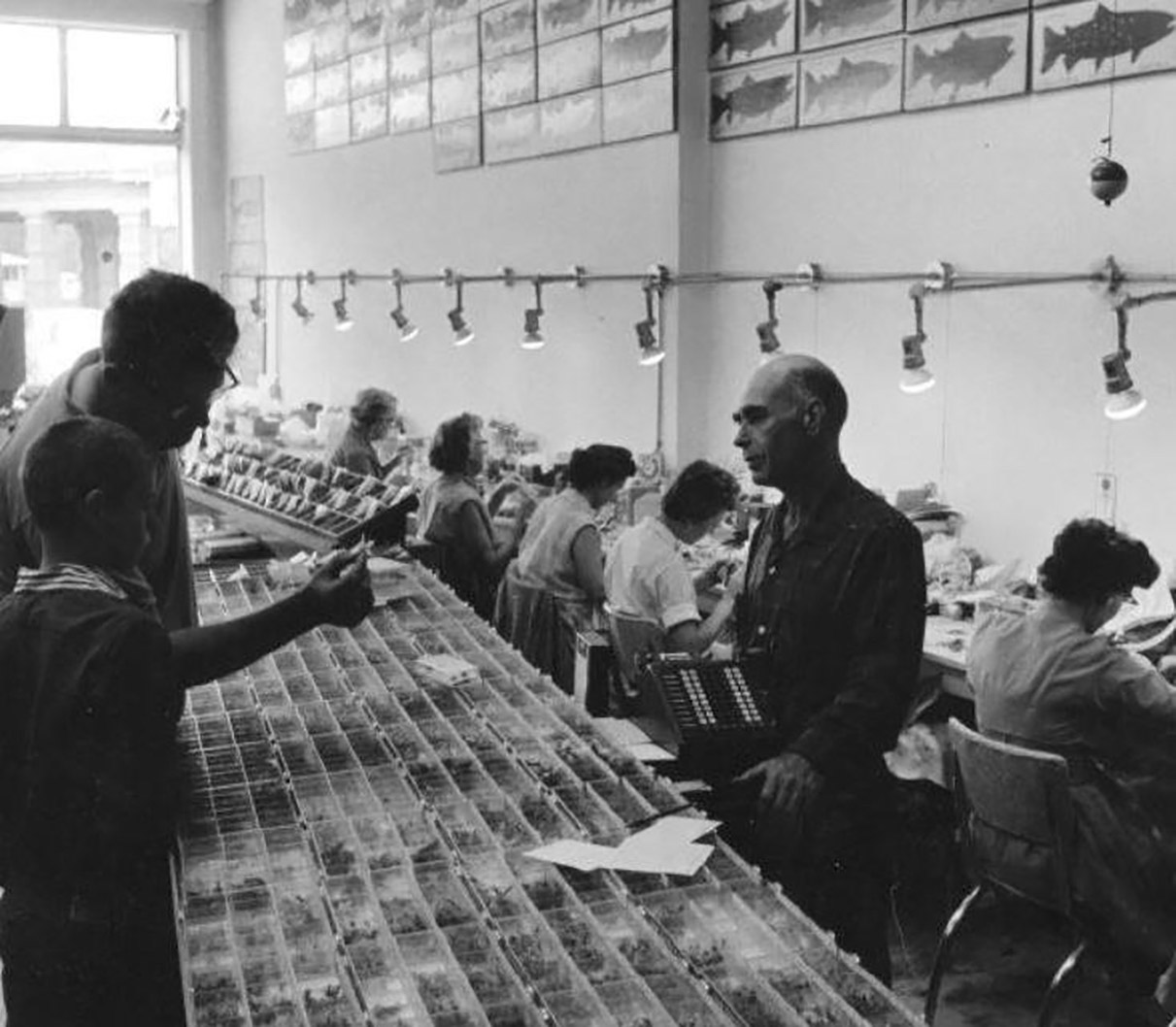Passing the Torch

Nestled near the banks of the Yellowstone River, Dan Bailey’s is much more than Livingston’s go-to outdoor shop. Within its walls lives a reminder of the first days of Montana fly fishing. This legacy is carried through every fly tied, rod sold, and trout chased after heading out the doors. It all begins with the man himself, Dan Bailey.
A Kentucky native, Dan Bailey grew up catching bass in small streams. While pursuing higher education, Bailey traveled along the east coast, with his love of fly fishing accompanying him every step of the way. Bailey married his wife Helen in 1936, and they headed west to spend their honeymoon fishing and camping along the flowing waters of the Madison River.
The Baileys made the move to Montana shortly thereafter, finding a home along Livingston’s Main Street for $25 per month. They opened the doors to their very first fly shop, living in a small room in the back.
Dan Bailey’s moved to its current location, downtown on Park St., in the 1950s. The shop’s shelves were lined with hand-tied flies, frequented by both locals and travelers passing through to visit Yellowstone. Livingston’s growth was slow, so the business gained its international notoriety through the mail-order business.
These hand-tied flies were sent all around the globe, total volume averaging 750,000 annually. Small-town Livingston’s fly-shop quickly became the biggest in the country.

When strolling about the shop today, hundreds of fish plaques can be seen lining the walls. Prior to his move to Montana, Dan Bailey caught a large brown trout out East. He traced the outline of the fish in remembrance, and began his “Wall of Fame.”
Bailey brought his Wall of Fame idea west to Montana, with two rules: no fish shall be traced unless larger than four pounds, and the fish must be caught on a fly.
Lucky anglers would get their names, the date & location of the catch, and the fly used written on a plaque to hang in the shop. Several notable anglers can be found on the Wall of Fame. Catch-and-release practice developed following the Wall of Fame, but those original outlines serve as a historical reminder of early fishing on the Yellowstone, as well as the connection between fish and their desired fly.
Bailey ran an incredibly successful fly-fishing business, but he also used his time and influence to protect the local waterways. Public access and preserving nature at its purest form were on the forefront of Bailey’s agenda, and he saw this seemingly never-ending battle through to the end. He helped develop the Madison-Gallatin chapter of Trout Unlimited and was a large supporter of the Nature Conservancy, both of which are still up and running and continue to improve our local community and its waters. Bailey was particularly influential when he and other local fishermen joined forces to strike down the idea of damming the Yellowstone River, bringing the idea of flooding Paradise Valley to a halt.
Dan Bailey passed away in 1982, with the shop’s legacy being handed down to his son John. John continued his father’s traditions, fighting for public access to Montana’s waterways, as well as raising funds for local education efforts.

In 2020, Dan Bailey’s underwent another change of hands, this time to long-time fisherman and owner of Timber Trails, Dale Sexton. As a previous Dan Bailey’s employee, MSU alumnus, and former fishing guide, Dale understood how to run a local fly shop. The first fly he ever bought was from Dan Bailey’s, so he aimed to keep the shop true to its origins, while also helping it adapt to modern times.
Today, the shop is open year-round, servicing not only fishing, but skiing, biking, camping, and hiking. They host community events and contribute to the nonprofits Dan Bailey set his sights on in the very beginning, as well as others that Sexton himself has supported over the years. Dan Bailey’s is an ode to the past and the early days of Montana fly fishing, but also a continuation of a legacy and enduring bond that outdoor recreation provides for families, friendships, and the community.
